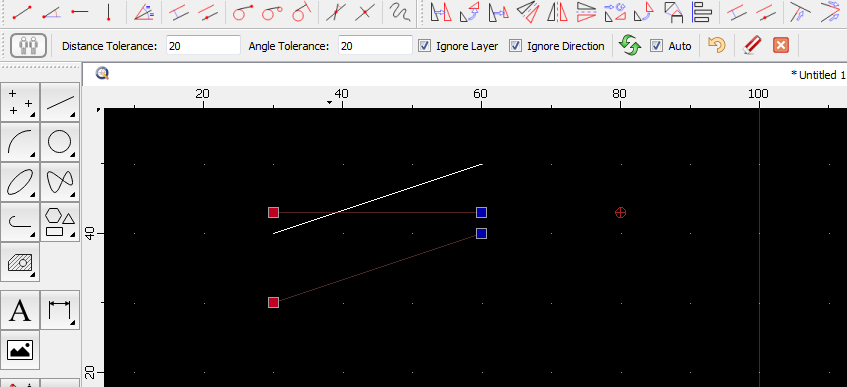Hello,
Indeed, a feature that is missing for long.
Just as Husky ... I can't get my mind around the functionality of MD.
On top, I need that functionality to finish Tile2Hatch.
Overlapping, but also just touching.
Catch 22: Coding touching in-line hatch segments leads to a spacing of 0 and a zero is a Dot.
Large tolerances are no solution either.
This is even rather or very dangerous in complex designs!

- MD_vs_large_values.png (27.13 KiB) Viewed 7364 times
In this example the horizontal is not selected by angle tolerance but by distance !!!
I presume 'angle tolerance' is for arc segments ... ?!
In Husky's example a value of 35 or so would select almost every entity.
'Overlapping elements' also means that only two ends overlap.
MD doesn't catch those.
'Unify overlapping elements' means they are converted to one single entity.
MD only selects those found by the fuzzy criteria.
One can erase duplicates found in one (too easy) click.
Unifying is something totally different.
Usually my approach is to transfer those found to a temporary layer.
Same with MZ.
Then I run OG/OC on copies and isolate dropouts (those not part of the poly)
OC will merge/unify some arc segments, OS can merge line segments.
After several recursive processing, back and forth, I get neat polys that explode to neat segments...
Then the human decides in what to keep and what to throw away.
In fact, I usually don't throw away much ... I rather isolate them ... The safest way so far.
Regards,
CVH